Don’t waste years figuring out the golf swing. The most important skill you need to play great golf is great ball striking. Most golfers learn confusing approaches that keep them stuck for years. Instead of leaving your golf swing up to chance, make it automatic with a science-backed system. I’ve spent 1000s of hours teaching the golf swing. The difference between great ball striking and poor ball striking is this – eliminating golf swing variables. By the end of this video, you will be able to strike the ball solid and simplify your golf swing.
✅ Free 13 Day Training Program – Become a Great Ball Striker
17 videos. 45 minutes of lessons. Normally $297 — yours FREE:
https://go.saguto.golf/?video=cOAHpEfOrR4
Traditional golf swing techniques have left golfers frustrated and stuck. With millions of conflicting golf tips and “experts” all teaching something different, there’s so much confusion on what needs to be done to play great golf. This problem makes golf extremely difficult and unenjoyable.
At SagutoGolf, we believe golf is life – and life should be enjoyed.
To play your best golf ever, you need a roadmap that gets you there. SagutoGolf helps you build a powerful swing that’s easy on your body and produces addicting contact with the golf ball shot-after-shot.
Because life is too short to play bad golf.
🔥 Gear I Use & Recommend (Viewer Discounts Below)
✅ Real Feel Golf Mat (3’x5’) – The best golf mat I’ve ever hit on. Feels like real grass!
10% OFF with code SAGUTOGOLF
✅ Precision Impact Trainer – Trains proper wrist angles and crisp contact
$20 OFF + Free Shipping with code CRISPYKFC
https://pureswingproducts.com/SagutoGolf
✅ The Divot Board – Instant feedback for crispy contact
https://www.divotboard.com/sales/?ref=tomsaguto
✅ FlightScope MEVO+ & Pro Package – Tour-level launch monitor and home simulator all in one.
15% OFF MEVO with code SAGUTOGOLF
10% OFF MEVO+ and Pro Package with code SGPRO
All
✅ UpGlove Golf Gloves – My favorite gloves for feel and durability
https://upglove.com/sagutogolf
✅ Athalonz Golf Shoes – Stable, powerful, and insanely comfortable
$20 OFF with code SAGUTOGOLF
EnVe Golf
✅ DIY Golf Net – My exact home setup
Watch the video: https://www.youtube.com/watch?v=-p11qs4E2T0
#golf #golftips #golfswing
One of the most important skills you need to play great golf is controlling contact. And in today’s video, I’m going to show you how to get pristine contact with the golf ball. You’re going to learn how to set up. And then my favorite part, swing. And then my next favorite part, smile at what a beautiful shot that was. And the way you’re going to learn this is through a simple formula that guarantees clean contact with the golf ball. So you simply get into a setup and swing and continually mash it without much thinking while I talk to you. These things are so simple that I have such limited focus, yet I am hitting ball first every single time. And that’s not meant to be a brag, but rather meant to show you the simplicity of this awesome system. So, how do we lock down contact? We lock down good contact by turning our shoulders in a circle and keeping our lead arm straight. It’s simple. Once you get these two things, you’ll see that you can strike the ground in the same spot every single time. You also see some awesome extra added distance along the way. And who doesn’t want extra distance for free? So, I’ll show you contact right now using these two things. So, the first thing is turning the shoulders in a circle. So in the golf swing, if I turn my shoulders in a circle, this ensures that my head stays in place, which is one of the most concrete elements for striking the ball solid. That includes on the center of the club face and striking the ground after the ball crispy divot. If I keep my lead arm straight and turn my shoulders without shifting my head off the ball, I’m going to see this club come into the ground the same spot every time after the ball. And you’d say that’s magic, but it’s really just physics and geometry at work. Let’s work with concrete principles. Where most golfers go wrong in their quest for contact is they add too many variables to the stroke. So that means instead of turning the shoulders in a circle, they turn in this big windup ellipse. And that means the contact point’s always roaming. And I have to shift and sway around to find my contact point. The best players know this. And that’s why you find them turning their shoulders in a circle in order to strike the ball cleanly every day because you cannot master the element of timing. It’s exactly what timing is. It’s a guess. We have to time. We just don’t have time for that. We just want to have time for mashing the ball. And I got a bonus for you at the end of this episode that’ll show you how to hit the ball more on the center of the club face. So, please make sure you stay tuned for that. We’re beginning with the foundational elements of contact. And this is the part that gets me every time. I’m going to start with my lead arm straight. And in order to turn my shoulders in circle and prevent any shifting and swing, I’m going to set weight on the front side. And a lot of people get this part really messed up or confused and this causes some problems. So when I set weight on the front side, this is weight forward. But make sure when you set weight forward that, you know, it’s just a nudge of the hips. It’s not this. It’s not this. I’m just taking my left hip and pushing it more forward to create a straight line relationship between my shoulder, hip, and knee. The consequence of this is chunk and hitting down too much. That’s the weight forward. That’s bad. The consequence of this is topping the ball and missing the ground or hitting too much behind the ball. So, none of those situations are the real weight forward. We just have a simple nudge like this. Boom. It’s a great way to view this is you look at a backwards Kshape. Straight line here. There’s a K shape. Now, let’s just hit a shot. Lead arm staying straight. Gonna set the weight forward. I’m gonna swing my shoulders without moving my head. And every time, this gets me every time. Every single time. I’ve done this on countless videos over the past 5 years, and it never fails. It’s because it’s a law. You saw me hit ball first, take a little divot after it. Now, when it comes to building up your own contact, it’s a great place to start just making one arm swings with your head staying in place. You make sure that the shoulder moves the arm and that the weight always stays forward throughout the entire swing. And you want to just see that club brushing the ground right there after the ball. This would be a basic half swing form. We level up that same idea to the full swing. Watch this. Add more shoulder turn. It’s the same idea. So adding more shoulder turn adds more power to the swing. So that’s that’s the difference between me setting up with the basic shot that we just did right here. So I’m going to set set the weight forward, anchor it, even exaggerate it more for this drill, and just swing keeping the lead arm straight. And I have a beautiful shot. Now, what’s cool about that? It felt great. I had 77 m hour mph club speed without using much power at all. And that was due to a really clean strike. And that’s not using my maximum amount of power. That’s just a contact piece, a really basic contact piece. For you to master contact, you have to start there and hit shots where it feels like half swing. So you’re not doing anything with the wrist. You’re not thinking about wrist hinge. not thinking about and introducing a really big turn. You’re just thinking, I got my lead arm straight. I got my weight staying forward. That’s it. Now, some common pitfalls you might encounter in this quest for clean contact is the weight forward trap of swinging all arms. So, some people might set their way forward, but they don’t turn their hips. And it’s essential that you turn your hips. That’s what keeps weight forward. If you didn’t turn your hips, you would struggle to take the club farther back and you’d start swaying. So then you’re no longer doing weight forward. You see the problem of weight back? Oh my, that’s such a consistency issue. Inconsistency guaranteed. Topped it. Now that that’s squirrel food. So anchor, allow the hips to react, and you’re going to hit ball first instead of back here. So start hitting some shots with shoulder swings anchoring weight forward, keeping the lead arm straight. Next thing we’re going to do is start getting more shoulder turn. And to get more shoulder turn, just think lead shoulder under the chin. So, as I anchor the weight forward, it’s going to get the shoulders turning more. With the weight back, it’s tough to turn the hips, and the hips are a vital element for speed. This restricts hip turn. Start with the weight back. Weight forward immediately introduces more hip turn into the stroke, more power. So anchoring this and you should be able to for this drill just for fun you could stand on one leg and by one leg I would do it like this as much weight forward as I can do barely standing on my trail leg and then just swing the shoulders really trying to anchor that weight. What really blows my mind about this is just how much club speed I create without doing any sort of weight shift. A lot of people think they need to create weight shift for power, but that just moves your contact point around. And what you saw right there is a very fast swing with an eight iron and not shifting at all. Just anchoring weight forward and the shoulders are guiding There we go. Good swing. So, how’s that for power without working so hard? It’s awesome. So, you begin to anchor contact by mastering the keys of weight forward and lead arm straight. The way we get those things working is turning the shoulders in a circle. No more shifting and swing. All right. Now, I’m going to hit some shots. Not thinking too much. Pop down a bunch of golf balls. We’re going to keep going until I hit a bad shot. And by bad shot, I mean bad contact. Weight forward. Lead arm straight. Swing the shoulders. Ball first. Divot. That’s crispy. Cool club head speed there. 98.3. Lead arm straight. Weight forward. Turn the shoulders. Ball first. Divot. That’s crispy. Let’s keep working down the line here. 99.1 club club head speed. Wow. Weight forward. Lead arm straight. Shoulders. That was very crispy. Contact was phenomenal. So like you got crispy and then there’s very crispy. There’s layers of crispiness. Is that three or four? Three. Four. We can keep going. Lead arm straight. Anchoring the weight. Shoulders. Ball. First divot. Crispy. Lead arm straight. Anchoring the weight. There we go again. Crispy. This like a a mantra, a trance. The predictability of weight forward. The sun’s going down right now. Weight forward. Arms straight. Turn the shoulders. That’s crispy. [Applause] Arm straight. Wave forward. Set up. That’s crispy. Weight forward. I don’t like that cut. We can get a little bit more of a draw. Weight forward. Lead arm straight. There it is again. Ball first divot. That’s crispy. Disregard the slight cut right now. That is a personal swing flaw. My contact is still good. Weight forward. Arm straight. That slight push cut is a result of a back swing flaw. Yet, you’re seeing crispy contact happening. Lee arm straight, weight forward. Maybe I can fix my swing flaw too right now. Still ball first. divot. I have not yet chunked a shot. This is something that should give you a lot of confidence in your ball striking is knowing that you’re working with laws instead of guesswork. If you’re having any contact issues, you’re probably doing one of two things in the beginning. You’re either one breaking down your arm or two shifting off the ball. So you can video your swing. Look at your swing and just look for those two things. Here we go again. Lead arm straight. Set the weight forward. Keep the weight forward. Oh, I chunked it. That’s not crispy. Why did I chunk that? Well, my weight didn’t stay forward long enough. But we can quickly rectify the situation. Weight forward, swing the shoulders, and that fixes the problem. Difference is huge between those two things to the point where you’d almost think that I I chunked it intentionally just to break the machine down. But no, just a reminder that we’re human. And that’s why we love playing golf, trying to master being a machine, ball striking machine. Yet our humanity comes in and keeps us humble. There’s another ball. First divot. Ball first divot. Okay. So, I’m I’m going to stop. We keep going. I’m sure I’m running out of storage space on my boat devices. Do we want? You know what? Forget it. We’ll just keep going until we really I already chunked one, but having too much fun with this. Weight forward, arm straight. It’s getting crispier as we go. By the way, don’t machine gun golf balls on the range. I’m just trying to save you some time. All right, let’s get serious about this one. We’re going to jack up the queen the the the club speed queen the swing speed. Get out. Get out of the park. Yeah, that was the longest carry yet. That one took off crazy. All right, we’ve been crisping it up quite a bit. So, I promised you at the end of the video I’d show you how to hit the center of the club face time and time again. The way we’re going to do that is through a really important concept. And we must never neglect this concept. It’s called tilt. So your relationship, your spine tilted towards the ground, affects where you strike on this club, whether it’s heel, center, or toe. If I lose my relationship, I introduce the possibility of there’s a heel strike or a S shot. We’re not going to talk about that. If I tilt too much, I introduce possibility of a toe strike or a lot of standing up into impact. Either way, toe strike. So, the proper balance is that happy medium that we set at address. It’s important for you to set the correct tilt of the spine down towards the ground first. And now, you see my shoulders have an angle down towards the ball. My hips do too. As you swing back, you keep the same tilt towards the ground. So, this spine tilt here when I get to the top is the same. The way we do it is by thinking about getting your front shoulder down towards the ground. And a lot of golfers don’t go down enough. So, I’m going to give you a great drill here. Think about pointing this shoulder at the ball. So, as I swing back, try to dip this shoulder into the ground. You don’t want your head to actually dip. That would be a chunk shot. And look, I’m tilting too much. But the feeling is pointing the shoulder at the ball with your head staying in place. Doing so guarantees a centered strike. Now, I’m going to hit one with not enough tilt first. Probably going to be a top shot or a shank or a heel shot. I’m going to lose my tilt. There’s a top shot. You can see the raising up of my spine to the top result in a top shot. Now I’m going to keep my tilt toward the ground making a normal swing thinking point my left shoulder my lead shoulder at the ball and she’s a be. So as you swing back be aware that weight forward and arm straight will get you the contact point controlled from the front view. But we also have another element in golf. We have the down the line view. Golf isn’t just a 2D game. We have a three-dimensional element to it. We have path. So, we have to think about this tilt. Tilt too much and the path goes up and down too much. Don’t tilt enough and you got around too much. The path is set by your spine tilt at a dress. So, the key to preserving that spine tilt is one, setting up your posture so that you have this tilt. You’re not just standing completely like this. Two, making sure that you turn your shoulder down to preserve the tilt throughout the entire swing. I lost my my phone died on me here, but um we’re going to hit another one anyway. So, my launch monitor is still is not going to work on this shot, but let’s hit it anyway. So, shoulder down to find the ground. So, that’s just another centered strike. And barring any any slight back swing flaws that I’ve been dealing with today, be fixing those up. I’ll get you a better one than that. Contact was good. Just got to fix my back swing a little bit. I’ll be talking about that in a future episode. That’s beautiful. Right online. I felt like that was probably one of my best back swings of the episode. All right, so good dog golfers. Low point control is crucial for playing great golf. Every great golfer knows how to do it. And every golfer that is aspiring to be great at golf must learn how to do it. And this is how. I’ll see you in a future episode.

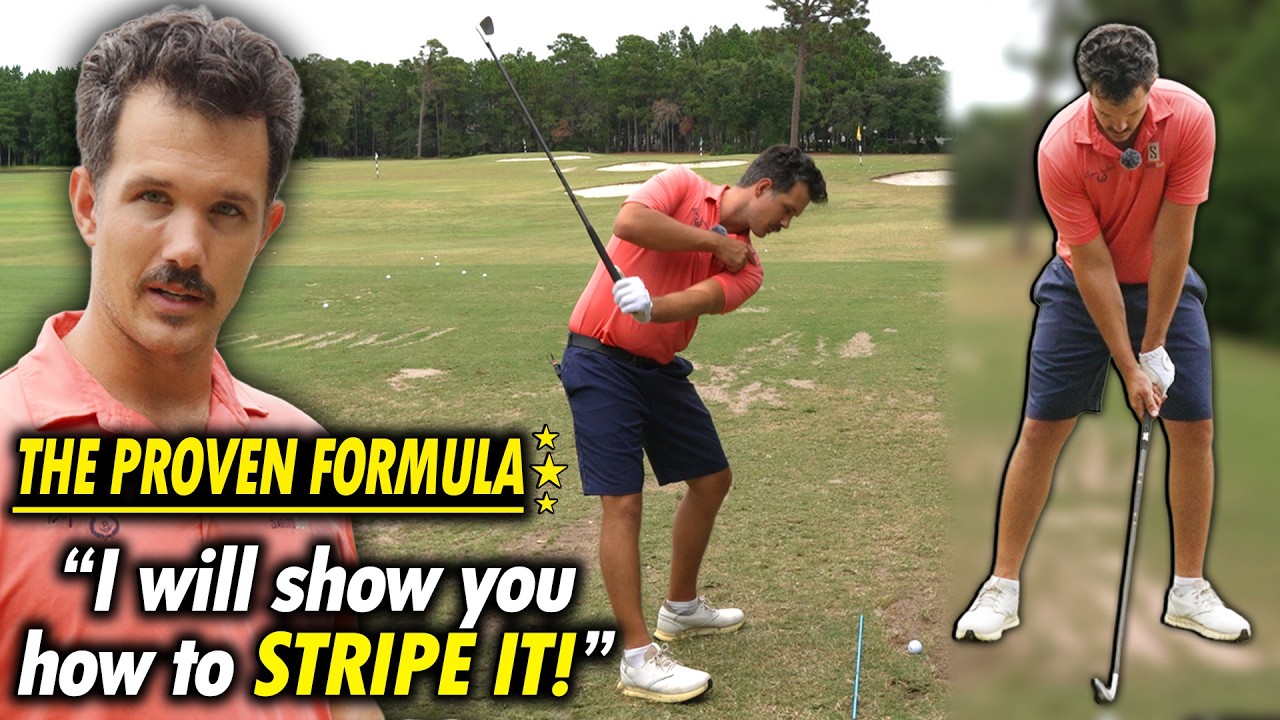
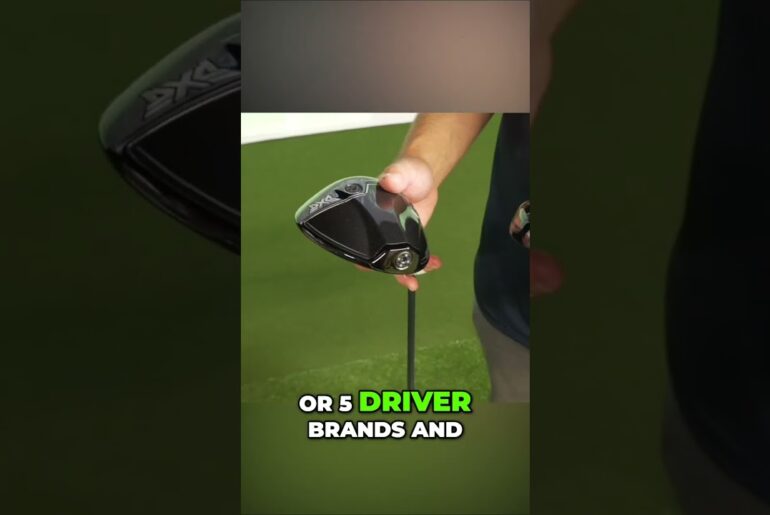
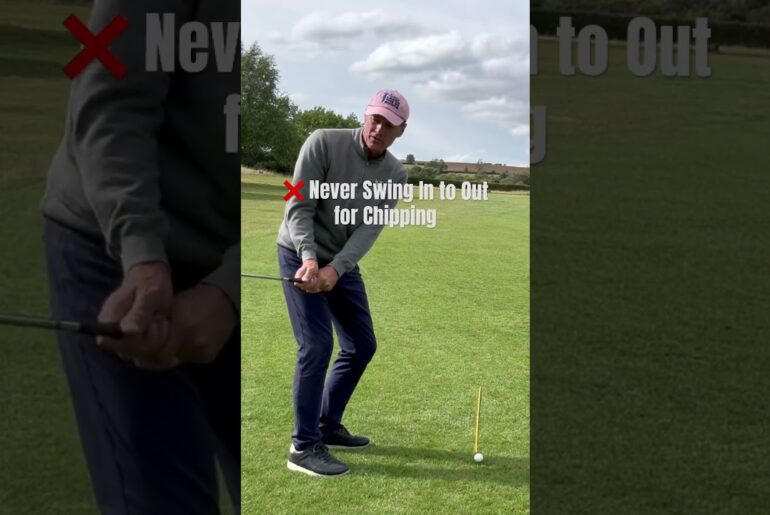
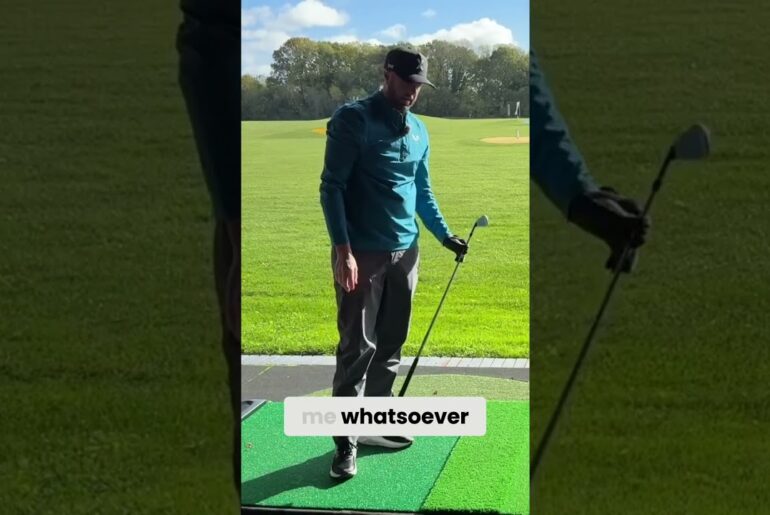
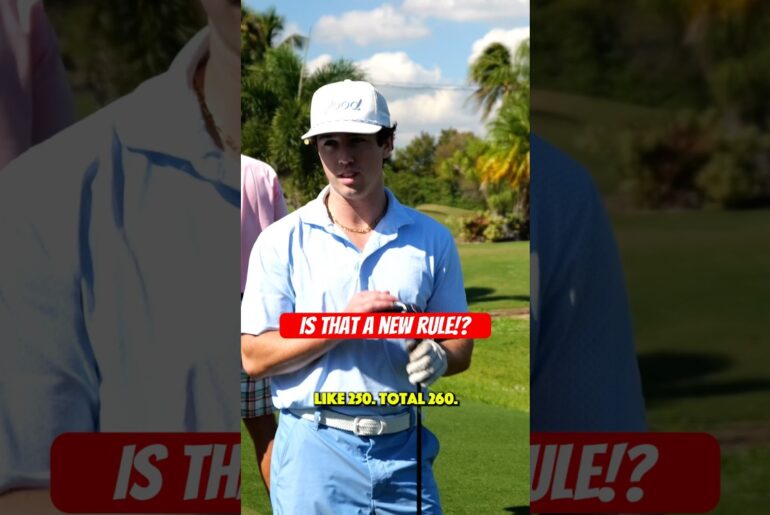


44 Comments
👍Like this video and comment below if it helped improve your golf game.
✅ Get My Free 13 Day Training Program to Transform Your Ball Striking. ($297 value)
Get it free here – https://go.saguto.golf/?video=cOAHpEfOrR4
I implemented the Saguto technique this year. Although a cheesy character, Saguto knows what he is doing! Weight forward, focusing on staying still and focusing on keeping the hands quiet and swinging with my shoulders. My goodness. The Ball striking has been out of this WORLD! For the first time in years I have lowered my handicap! It really is a much simpler and repeatable swing!!!!! thank you so much!!!
The guy behind you 😂
Great video mate. Thank you 😎
Hey Tom, I have just watched a video with Sandy Lyle, Nick Faldo, Ian Woosnam and Sam Torrance playing a 4-hole match at the Belfry to commemorate the 40 year anniversary of a European win there. In discussion with Ian Woosnam, Sandy Lyle said he follows your channel as he was struggling with his swing! He was gonna carry on however, Woosy butted in and started rattling on about someone else.
Noticed a differrence this morning – just solid contact, a few pulls, driver push draws, able to hit 3 wood and hybrid off the deck again. was shifting weight forward incorrectly.
Boycott lsraeI and stop the genocide in Gaza . ..
Woods would be great!Please!
Since finding your videos, I literally refuse to watch any other video on ball striking – they are all so confusing compared to yours
Looking forward to the backswing video. I've been struggling with a low inside takeaway with very little hinge all year.
What made you choose graphite shafts?
Your tip I watched the other day completely changed my game. I lifted with my lead shoulder (thus keeping arms straight). I definitely lifted with my hands previously. By making that change I finally felt what you meant by my trail arm folding creating wrist hinge. I played Saturday (pre-change) not a single par, mostly double bogeys if not worse. I played Sunday and made this change, I hit par on four holes, I’ve NEVER done that yet (played 3-4 months). 😮 THANKS Saguto.
Brilliant this tom. I'm trying to collect as much information from you as possible. I've watched all your videos. I simply refuse to watch any other youtuber say for rob Cheney. Thanks so much tom
Thanks Tom. What are using to measure your numbers on your mobile?
Great video
My favorite way to use your channel is focus on the drill a few weeks then go back for a new drill from a recent video. You change up your look periodically, but today got to be in the presence of this majestic stache. Kudos
179 with an 8i?! I can only dream
Edit: 190 wow
Can you discuss ball position? Your 8 iron is almost where I have the ball for my driver. I usually hit a short iron thin with the ball positioned that far up in the stance.
Another Great lesson Tom! Say, what is the main source of power, body (hips/rotation) or something else. Are our arms powering the swing at all? Thanks ⛳️💯
Tom, using you weight forward shoulders around swing I have found the following to be true.
Strong L/H grip = pinky side L/H wrist-bone leading at impact = held off release = square to open clubface at impact.
Weak L/H grip = Thumb-side L/H wrist-bone leading at impact = full release = square to closed clubface at impact.
Try it and see what you think.
Boy did I need this refresher. I just went out and hit my best score all year of an 83. Not bad for an 18 handicapper. Weight forward, left arm strait and turn the shoulders is as simple as it gets. Thanks Tom!
I saw a video my brother took of me, unaware, and realize that I chicken wing my left arm. I did not have my left arm straight.
OK Saguto. I am getting angry. I have adopted many of your techniques along with others from Erika Larken, Paul Wilson and others. I make solid contact, straight to slight draw, and a nice effortless swing. BUT my 8 iron swing speed is 65 mph! How do you get 99 mph? If I try really hard I might get to 70. My release is good, swoosh sound 1 foot after the ball. Full wrist cock. What's missing?
Is it the camera angle or is your ball very near lead heel for an iron shot?
Your feet look wider than your shoulders. Is this the way we should always play
This apply to Irons only is that correct?
One of the very best videos to help with everyones golf swing.
Incredible coaching
Thanks
After struggling lately with someone else’s swing teachings, I decided to give you another shot. I watched this video this morning and went and played this afternoon. The one thing I never picked up from you before was the little shift to create the letter K. I hit a lot of great shots today. Even hit my longest drive of the year, 245!! Let’s keep it real, I did hit a few really bad shots, but overall I was very pleased and I think I fully understand the shoulder turn now. Just as the season is winding down…..Am I back in the light or the dark side?
Hi, Tom. Please explain the angle b/w lthe left wrist and the shaft at 16:56. Why is shaft line not horizontal? Cheers.
Weight forward = hip bump
I know you talk a lot about the trail arm turned out during the swing but how do you stop both arms fighting each other? I've tried the elbows together feeling but I'm still not getting consistent results.
Having a hard time swing the shoulders on the down swing thru the ball
The 'stache must stay.
That's great hitting Tom. I do think that one of the key fundamentals to your swing is that you take your grip with your hands directly over the ball; and, then adjust your position. It's an interesting one; but, strange as may seem, the handle actually pushes the body around when we apply our hands on the club correctly, like you do. And, it's easy to prove this to yourself. if you grip the club with just your left hand; and, hold it up off the ground, with your left hand directly over the club; and, then press the little finger side of your left hand against the handle, your hand will move forwards; and, the club will start back. But, do the same thing with your right arm behind your back; and, you will find that your right side turns all the way back. When the arm is placed behind the back, obviously, it applies a certain amount of rotary force. When the handle then, also, exerts a reactionary force against the hand, the shoulders turn all the way back.
Go for the goatee vs the porn star 'stache, & bring back the 'fro…
What club are you using in this video?
I need to try this out soon!
I've been making instagram reels for entertainment but it has also helped me slow down and analyse my swing and I have a very over the top swing path and next to no weight transfer.
I'm excited to try this out 🙂
Tom do you like to feel as if you’re giving an extra umph through the ball with the hands/arms? Or do you mainly feel shoulders “hitting” through the ball with quiet hands ?
By keeping the right elbow tug makes the club shallow
you always show with shorter clubs, why don't you demonstrate with longer clubs/woods
Tom, Please demonstrate how you hit pitching and chipping short shots with S&T. Mine are all just punch shots, and then I have to resort to my old swing for these shots. Thanks.
The guy behind you couldn’t go sit down for a little while??? So annoying
Another great video
Would you use this technique with driver?
7:46 UNLIMITED POWAAAAAA